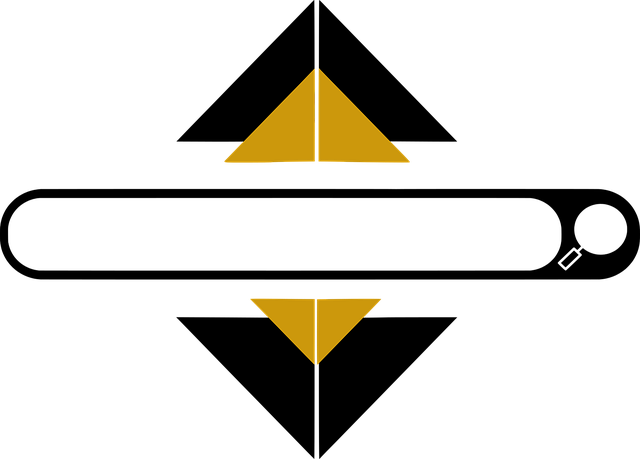URL structures are essential components of on-page optimization training for successful SEO, acting as a bridge between user understanding and search engine indexing. Crafting concise, descriptive URLs rich in relevant keywords improves user experience, speeds up page indexing, aligns with navigation preferences, boosts click-through rates, and enhances website visibility, ultimately driving increased organic traffic through improved search rankings. Hierarchical designs and keyword-rich slugs further optimize crawling and indexing while providing context to both users and search algorithms. On-page optimization techniques, including structured URLs, significantly enhance accessibility and relevance signals to search engines, fostering better indexing and higher rankings.
In today’s digital landscape, a robust online presence hinges on SEO-friendly URL structures. This comprehensive guide delves into the fundamentals of optimizing your website’s URLs for search engines. From understanding the basics of on-page optimization to integrating keywords effectively and simplifying navigation with hierarchical structures, you’ll gain valuable insights for crafting user-friendly and SEO-driven URLs. Discover how these practices impact search rankings and explore tools to analyze and optimize your URL structure, enhancing your on-page optimization training.
Understanding SEO-Friendly URL Structures: The Basics

URL structures play a pivotal role in on-page optimization training, serving as a fundamental component of search engine optimization (SEO). A SEO-friendly URL is not just aesthetically pleasing; it signals to search engines what your webpage is about and enhances its visibility. These URLs are typically short, descriptive, and include relevant keywords that accurately represent the content within. This simple yet powerful technique improves user experience, making it easier for visitors to understand where they are on a website and what they can expect to find.
By incorporating keywords naturally, you ensure that search engines like Google can quickly index your pages and understand their context. For instance, instead of using random numbers or generic terms, consider “www.example.com/seo-tips” as opposed to “www.example.com/page2345”. This basic concept forms the backbone of effective on-page optimization, ensuring that your website’s architecture is as accessible and beneficial for both users and search algorithms as possible.
Why On-Page Optimization Matters for URL Structure

In the realm of search engine optimization (SEO), on-page optimization plays a pivotal role in enhancing a website’s visibility and user experience, with URL structure being a critical component. A well-structured URL not only helps search engines understand the content of a page but also significantly impacts how users perceive and interact with a site. On-Page Optimization Training equips professionals with the knowledge to create URLs that are both informative and optimized for relevant keywords, ensuring each web page is easily digestible for search algorithms.
By implementing on-page optimization, businesses can ensure their URL structures provide clear signals to both search engines and users about the content they are about to engage with. This practice simplifies navigation, improves click-through rates, and fosters a positive user experience—all factors that contribute to better SEO rankings and increased website traffic over time.
Best Practices for Crafting User-Friendly URLs

When crafting user-friendly URLs, adhering to best practices is essential for effective on-page optimization training. A good URL structure should be concise, descriptive, and include relevant keywords that accurately represent the content of the page. This not only enhances user experience but also signals search engines about the topic and context of the webpage, aiding in accurate indexing and ranking.
Avoid using generic or complicated terms, and instead opt for simple language that is easily understandable. URLs should be structured in a logical manner, often reflecting the site’s hierarchy, making navigation intuitive for both users and search engine crawlers. Incorporating keywords naturally within these structures can significantly improve your site’s visibility and click-through rates, demonstrating to search engines that your content is relevant and worth indexing highly.
Keyword Integration: How to Include Them Effectively

URL structures are a crucial part of on-page optimization training, as they play a significant role in how search engines crawl and index web pages. When integrating keywords effectively into URLs, it’s essential to keep them concise and descriptive. This means including relevant keywords that accurately represent the content of the page while ensuring the URL remains readable by both users and search engine bots.
A good practice is to use keyword-rich slugs for dynamic or category pages, separating them with hyphens or underscores. For instance, a blog post about ‘the benefits of on-page optimization’ could have a URL like `www.example.com/blog/on-page-optimization-benefits`. This approach not only enhances SEO but also provides better user experience as it gives an immediate indication of what the page is about. Remember, while keyword integration is vital, overdoing it with excessive keywords or stuffing them into URLs can have a negative impact on both search engine rankings and user perception.
Simplifying Navigation with Hierarchical Structures

URL structures play a significant role in on-page optimization training, particularly in simplifying navigation for both users and search engines. Hierarchical URL designs create a clear organization of web pages, reflecting the site’s information architecture. This approach ensures that each page has a specific place within the website’s framework, making it easier for visitors to browse and understand the site’s content.
By implementing hierarchical structures, URLs become more intuitive, allowing users to anticipate where they are and how to navigate to related pages. This on-page optimization technique not only enhances user experience but also aids search engine crawlers in indexing the site effectively. Search engines can better comprehend the relationships between pages, leading to improved visibility in search results when optimized URL structures are combined with relevant keywords and descriptive annotations.
The Impact of SEO-Friendly URLs on Search Rankings

SEO-friendly URLs play a pivotal role in enhancing search rankings, serving as a direct link between the content on your website and the keywords users are searching for. When crafting these URLs, it’s essential to include relevant keywords naturally and make them user-friendly, ensuring both search engines and visitors can quickly grasp the page’s topic. This strategy not only improves accessibility but also signals to search algorithms that your web pages are highly relevant to specific queries.
By implementing on-page optimization techniques, including structured and keyword-rich URLs, you provide valuable context for search engine crawlers. This, in turn, leads to better indexing and increased visibility during user searches. As a result, websites with optimized URL structures often rank higher, attracting more organic traffic and ultimately contributing to improved online performance and user engagement.
Tools and Techniques for Analyzing and Optimizing URL Structures

In today’s digital landscape, on-page optimization is crucial for any website aiming to rank high in search engine results. One significant aspect of this is crafting SEO-friendly URL structures. These URLs not only provide essential context to both users and search engines but also serve as a foundation for effective on-page optimization training. Various tools are available to help analyze and optimize these structures. For instance, SEO specialists often rely on analytics platforms that offer insights into user behavior, enabling them to identify keywords and content patterns that can be incorporated into URL redesigns.
Additionally, URL optimization tools play a pivotal role in this process. These tools scrutinize existing URLs for factors like keyword density, readability, and length, offering recommendations for improvement. By leveraging such tools and integrating best practices from on-page optimization training, webmasters can create URLs that not only enhance user experience but also signal to search engines the relevance of the content they house.
